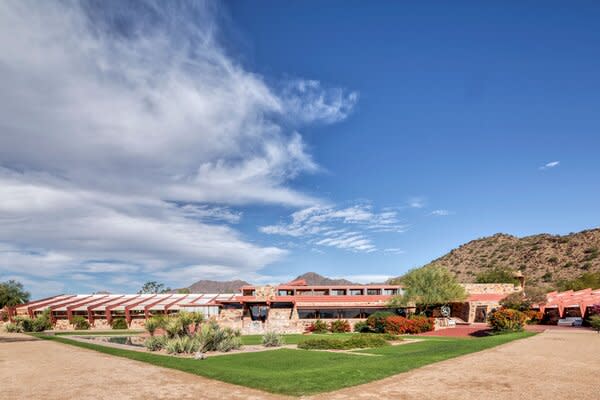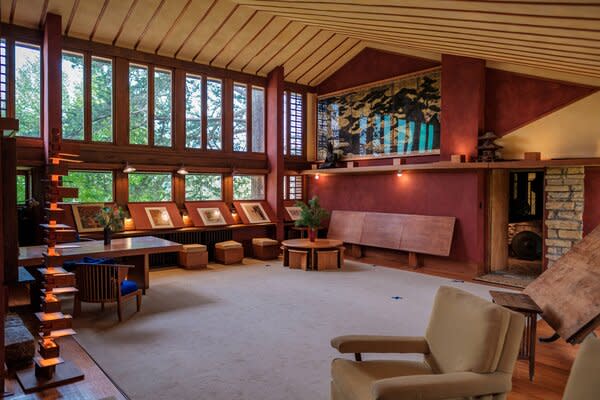Who Owns Frank Lloyd Wright’s Legacy? It’s Complicated
- Oops!Something went wrong.Please try again later.
The estate of arguably America’s most famous architect is tied up in a convoluted web of foundations, conservancies, and a trust—one that outlines the state of preservation today.

In the mid-1960s, Americans decided it was time to preserve their past. That’s when federal protective status was first granted to historic districts, including Charleston’s in South Carolina and the Vieux Carré in New Orleans, and in 1966, the National Register of Historic Places was created. But for all of the interest in preserving America’s meaningful landmarks, the midcentury sense of history was narrow in scope; preservationist zeal largely focused its efforts on buildings and districts established before the Gilded Age, with a particular emphasis on the Revolutionary Era. (For example, the first site placed on the register was Slater Mill in Rhode Island, built in the 1790s.) The 20th century wasn’t yet considered worth preserving.
That began to change after major works of more recent architecture were destroyed, including New York’s original Penn Station and Louis Sullivan and Dankmar Adler’s Garrick Theater in Chicago, which was leveled for a parking garage. The tide shifted in the early 1970s as preservationists and the surviving families of important American architects began to understand that if modern architecture wasn’t protected, then it would be perpetually endangered. And a significant change was spurred by the work of one architect in particular: Frank Lloyd Wright. Protecting his work was a paradigm shift in historic preservation and, in response, a number of organizations (foundations, a trust, and conservancies) were formed to protect individual buildings. The result today is a web of nonprofits that effectively own different pieces of Wright and his work, sometimes with competing visions for his legacy and what it entails. This patchwork approach isn’t specific to Wright, but as arguably the most famous American architect, he produced work that is effectively the model for protecting architectural landmarks in the United States—for better and for worse.
Wright died in 1959, leaving behind a vast body of work scattered throughout the nation after executing over 500 buildings in his lifetime. High-profile commissions like the one he received from New York’s Guggenheim Museum, combined with his distinctive style and scandalous personal life, had made Wright a household name. (Ayn Rand is said to have modeled her most famous protagonist after him.) Despite his fame, Wright’s work wasn’t immune to the urban reshaping that led to the destruction of many 20th- century landmarks. The Chicago home he designed and built for Oscar and Katherine Steffens, for instance, was demolished in 1963, making way for a housing development, and other works of his were torn down in his lifetime. Protecting Wright’s work, however, was a complicated endeavor. Most of his work was in private hands, and homeowners like the Steffenses were free to sell to the highest bidder, regardless of architectural significance. (This wasn’t particularly unusual for works of modern architecture; when Ray Eames wanted to preserve her and Charles’s Los Angeles house, she couldn’t find a single extant institution that would guarantee it wouldn’t sell the home within a decade.)
See the full story on Dwell.com: Who Owns Frank Lloyd Wright’s Legacy? It’s Complicated




